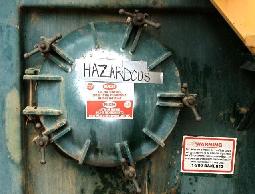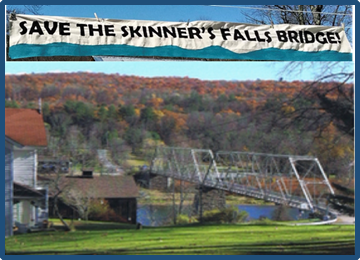
National Park Service Comments on the Skinners Falls Bridge
June 17, 2021
Save the Skinners Falls Bridge – Give to the Ed Wesely Fund
June 19, 2021DCS, Delaware RiverKeeper, Environment New jersey, Catskill Mountainkeeper, FWW, NRDC, NJ Sierra Club, Delaware League of Women Voters and other groups are supporting a series of webinars meant to educate about fracking wastewater and why it should be banned in the Delaware River Basin. Below is a talk I gave at the first Delaware Basin webinar. – Barbara Arrindell, Director, Damascus Citizens for Sustainability
View the Frack Ban Virtual Forum
When a gas well is fracked, gas and fluids gush back up to the surface not only from the extreme pressures needed to accomplish hydraulic fracturing, but also because the formation is ‘over-pressured’ meaning it has its own pressure pushing out from that layer. This pressure is why wastewater continues to surface and cannot be stopped. Called “flowback,” it contains water, chemicals and sand used in frack fluids, and deep geology pollutants that are released from the buried shale formations.
It is well known and long understood that the Marcellus Shale formation is radioactive – that radioactivity is one of the markers used to locate the oil gas formation layer! The naturally occurring radioactive materials (NORM) are not a health hazard when buried a mile down, but are highly dangerous when they are brought to the surface. There is no way to avoid these pollutants, making wastewater produced by fracking inevitably contaminated with radioactivity. Other wastes and the gas stream itself are also carrying radioactivity. Exposure to these radioactive materials by the public will occur, increasing the likelihood of cancers. Radium-226 has a half-life of 1,600 years, so it will be present in the environment for thousands of years. It degrades to Radon emitting highly bio-active radioactive particles. The dangers of Radon are well known, but it is more than Radon.
Radioactivity is measured by concentration, radioactivity intensity, biological impact, and/or amount absorbed. The amount and type of energy emitted by the particle release is expressed by it being Alpha, Beta or Gamma radiation. To avoid confusion, I will only use pico-curies, a radioactivity intensity measurement, but you will see these other types of measurements if you look into this further. Lower numbers are best – for example, the EPA maximum contaminant level for Radium in drinking water is 5 pico-curies/liter.
The flowback, called the ‘brine’ because of its high salt content and in an effort to hide its toxic components, can be highly radioactive (as concentrated as 15,000 pCi/L), and each time the water is reused at another fracked gas or oil well, more Radium, Uranium, Strontium and other radioactive materials are added. These materials are also more easily dissolved in high salt so are carried in the salty wastewater. Once the material is moved from the formation layer it becomes TENORM, or Technically Enhanced Naturally Occurring Radioactive Materials which should be governed by additional rules related to TENORM, but is not, because the waste is mostly exempt from protective regulations via 1980’s and 2005 arrangements favoring the fossil fuel industry over human and environmental health. These exemptions can be overcome by state or regional authorities, like the DRBC. The DRBC can and must ban the import, treatment and disposal of fracking wastewater in order to avoid the un-necessary importing of radioactive waste into the Delaware Basin.
A Duke University study of a stream in Pennsylvania below a frack wastewater treatment plant found radium 226 levels in stream sediments at the point of discharge were ∼200 times greater than upstream sediments and background sediments and above low-level radioactive waste disposal thresholds.
Government does not properly regulate Frack wastewater containing TENORM, and there is no indication in prior draft gas regulations that DRBC is planning to tackle the problem of radioactivity in the wastewater imports. The concentrated residuals that are filtered from wastewater at treatment plants can occur at levels that are so dangerous they would need to be removed to a specially designed storage facility, such as those used for nuclear waste. But that kind of special handling would need to be built into the regulation of the residuals as hazardous waste, which is not being proposed. In addition, the lack of analysis at well sites and related lack of truck signage, “placarding”, that would accurately reflect the level of radioactivity of transported wastewater adds additional risk to movement of radioactive wastewater from outside of the basin to the Delaware River Watershed for treatment and disposal.
Plus there is the ever present inevitability of transport accidents and deliberate illegal dumping. We must insist that the waste not be imported.




